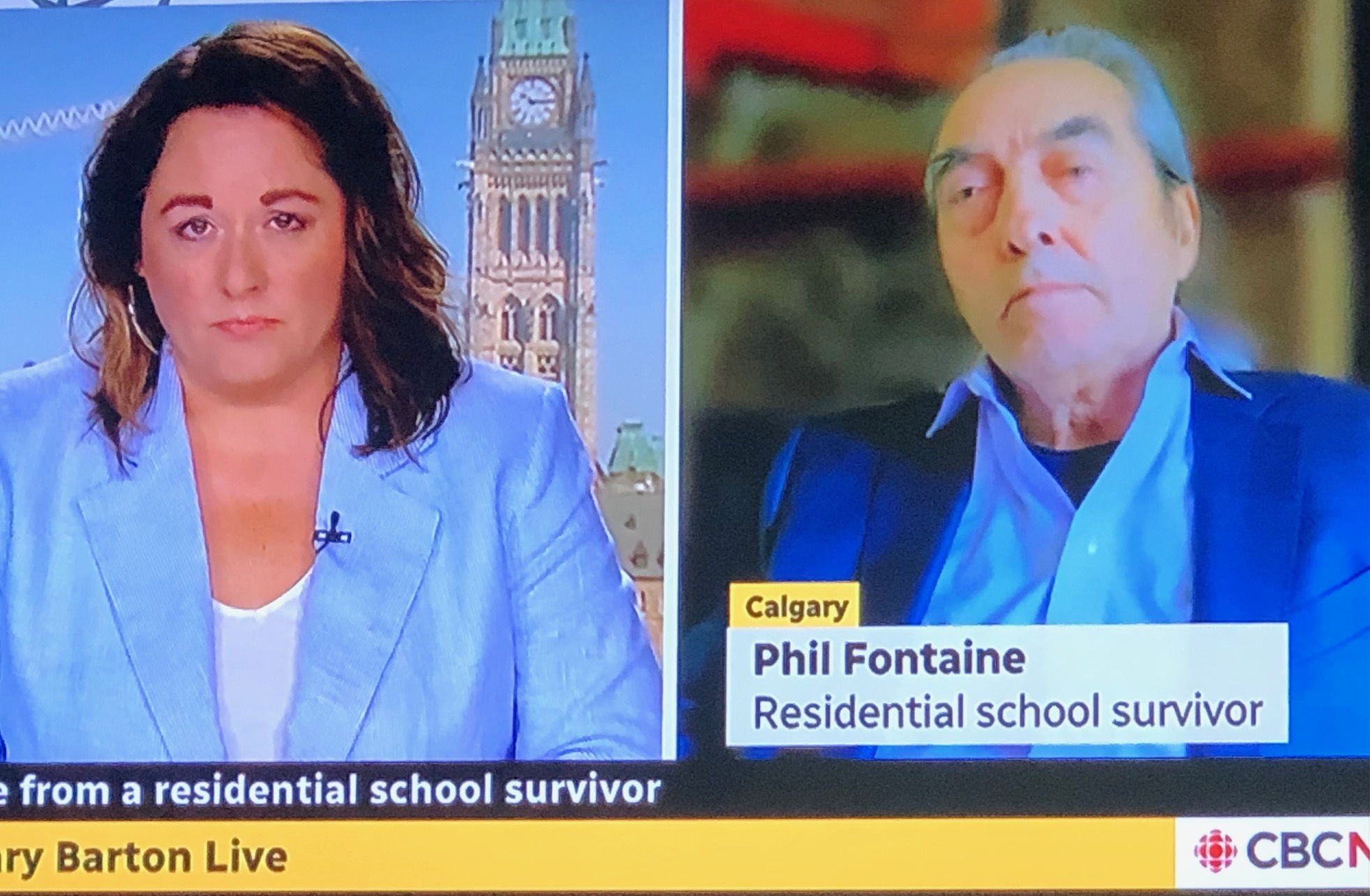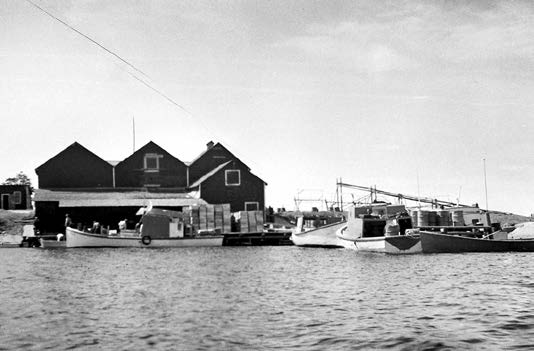The Exploratory Dialogues: Breaking First Trail for the Pathways and Principles of Reconciliation

Dispatch 1: The Case for ESG+I
May 27, 2021
My Viking Lady of the Lake new ebook
July 15, 2022I first shared this story in my 2014 Memoir Vikings on a Prairie Ocean , an excerpt of which you will find below. The recent discovery of the unmarked graves on the grounds of the Kamloops Residential School prompts me to write this introduction and share the excerpt again.
This month the discovery of a field of unmarked graves of children buried on the ground of the former Indian Residential School at Kamloops drilled into the conscience of the Canadian public. Once again the spotlight was turned on to this tragic period in the lives of the indigenous people, and this shameful chapter in Canada’s history. Undoubtedly there will be other similar discoveries at other schools in the months and years ahead. Kamloops was one of the oldest and largest schools in the country.
On Sunday June 6 , 2021 distinguished Canadian, and former National Chief of the AFN, my long friend Philip Fontaine O.C., was interviewed by the prominent CBC journalist ,Rosemary Barton , with respect to this discovery, and its implications.
Later he and I reminisced about what has been a life journey for him. For a short but formative period I had joined with him on that journey helping to initiate the difficult conversations it would take to open new pathways into the future. As usual we had a wide ranging discussion as friends of 50 years might do, including revisiting that formative period just before the century turned over its last page into the next one.
In September of 1998, Kamloops was the location of the first of a series of what were known as the “Exploratory Dialogues” that brought together representatives of survivors groups, aboriginal healers and leaders, and senior representatives of the churches and government for the first time in very face-to- face conversations. These were very difficult and intense conversations, carried out in a circle, each over two and a half very long days involving 40 to 70 people in 8 locations across the country. For the indigenous participants sharing their stories, speaking their truths, this took great courage requiring them to confront and express deeply painful memories buried deeply inside their souls.
These Dialogues were a critical first step in moving the reality of what had gone on at these schools from the anguished memories of those who were living with them from their inner darkness into the light of awareness. Over the course of these dialogues a set of Guiding Principles were captured and adopted in a Final Dialogue held in Toronto around these objectives: Disclosure with safety; Validation with sensitivity; Remedies with flexibility; Commemoration with respect; and Healing; closure; reconciliation; and renewal.
I share in what follows the story of these dialogues, and now attach the Guiding Principles that were developed through them. They formed the backdrop to what much of what has followed including the Indian Residential School Settlement Agreement reached in 2007 and the Truth and Reconciliation Commission, formed in 2008 with its report issued in 2015. These Guiding Principles may be a helpful resource to other people and places struggling with ways to go forward to confront similarly deep troubling detritus from the past.
There has been no greater truth more penetrating to understand and experience than the impact of residential schools on the aboriginal people of Canada, a truth from which there is no hiding, and for the many individuals affected, no escaping. In 1999, I was contacted by my friend, Phil Fontaine, who was then national chief of the Assembly of First Nations, and George Thomson, the federal Deputy Minister of Justice. They asked me to develop, coordinate and lead across Canada what became known as the “Exploratory Dialogues” to bring together representatives of the survivor groups, the government and the churches to explore alternate approaches to resolving the growing avalanche of residential school claims in the courts. We traversed the country in a sequence of Dialogues comprising 50 to 70 people assembled in each centre for two long days.
I had many great partners in this exercise, including my friend Chief Mark Wedge from the Yukon, and, in the final dialogue, Barry Stuart, who had been a background counsellor throughout. A strong supporter was Robert Joseph, a distinguished hereditary chief with an honorary doctorate from the University of British Columbia, then the executive director of the BC Residential Schools Project chaired by Chief Steven Point, leader, lawyer and judge, who later became the lieutenant governor of British Columbia.
Often when Phil and I would connect we would wind the clock back to 1973 when Phil called his erstwhile lawyer. “I want to fire the teachers here at the Fort.”
“Phil, small detail. You don’t hire them.”
“Yeah, I guess that’s a point. What if I just issue an order that they cannot come on the reserve?”
“That should do it!”
Phil had no issue with the teachers. His goal was to give control of the school to the community, and away from Indian Affairs. Our reminiscences always reach a climax when we recall the three ever longer telegrams to the Head of the Public Service Commission of Canada (he was unresponsive to letters and phone calls and there were no faxes or emails!) to negotiate the teachers out of the superannuation fund. We were ushered into a massive Ottawa boardroom. After an hour or so the man himself appeared. You could see bewilderment and bemusement all over his face at the spectacle of what he no doubt saw as two bushy haired kids that needed to be put in their place. Soon after, the Sakeeng Education Authority was borne, I believe the first of its kind in Canada, with Yngve Lithman as its first executive director. It has been a long road since those days.
I told Phil at the outset that without someone beside me who understood the residential school experience and its impact, and knew the survivor’s groups, it would be impossible to manage the task reasonably and responsibly. He told me Maggie Hodgson was the person; she knew everyone and could accomplish anything. Of course, he was right. Maggie is smart, canny, wise and remarkably seems to know everyone in the Aboriginal world connected to residential schools, from one end of Canada to the other. Maggie stalked me around the mulberry bush, sizing me up in a Vancouver hotel for most of the day when we first met. I offered to drive her to another meeting at the end of the day, and as we chatted in the car before she got out, her last words were, “I can dance with you.” My friend Maggie and I danced together just fine. came with connections, sagacity, toughness and softness—quite the package. It’s a combination many have recognized, and it earned her our nation’s highest civilian honour, the Order of Canada.
What was shared in those meeting rooms was deeply troubling. It would shock most Canadians. I confess to often crying on the inside, and visibly on occasion. Kids, now sixty, pulled from their mothers’ and fathers’ arms under threat of imprisonment. Communities emptied emotionally with their children home only for annual visits. There were some positive stories recounted, for the experience was not universally bad. But there was no shortage of stories of abuse of every possible kind, including the widespread horror of sexual exploitation at the hands of pedophiles who migrated to those institutions like bees to honey. Students went on to become parents, without the experience of being parented themselves, triggering generational cycles of abuse.
The Dialogues were a breakthrough. A fundamental barrier was crossed. People had a voice, not just those who were students or families and communities who had felt the intergenerational consequences, but those within government and the churches who felt this pain no less deeply than I. They carried the burden of institutional responsibility and accountability for things of which they had had no personal knowledge, much less involvement. Conversations and understanding began, and networks were established.
We drew this body of work together in a final Dialogue that brought together representatives from each of the prior events to develop a concluding set of principles to inform how we might move forward together. Regrettably, the tangle of litigation that had already consumed these issues—between all the groups of actors, and at that point particularly between the government and the churches—sucked the momentum out of this remarkable achievement. Once more, the problem was forced into a process ill-designed to deal with it. A decade later a solution was reached. I leave to others to reflect at a later point with the full trajectory of history as to whether there were other and better ways this could have been handled.


